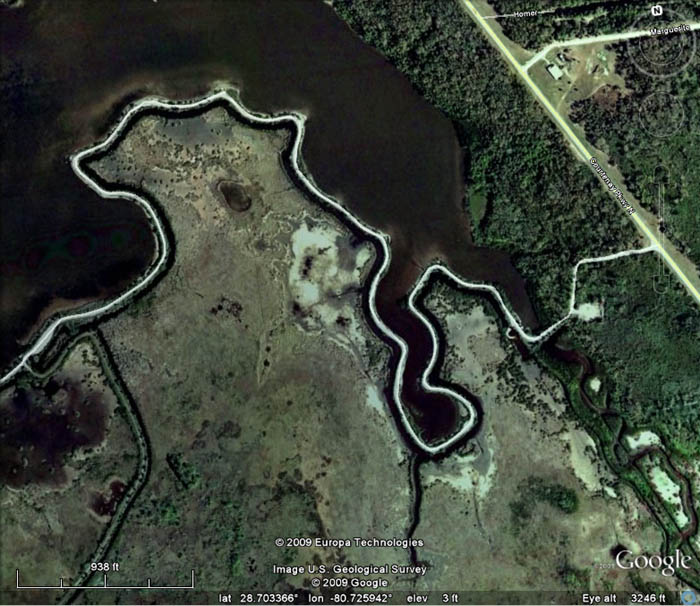Today is the 201st anniversary of Charles Darwin’s birth, and now considered an unofficial holiday. It is intended to recognize the contributions Darwin made to science, most especially the Theory of Evolution by Natural Selection. Most people simply refer to this as “evolution,” but that technically falls a little short of the mark – evolution can refer to anything that changes. It’s the “natural selection” part that defines what Darwin kick-started.
It’s kind of a funny thing to celebrate, really. Most of the scientists that have contributed remarkable amounts to our base of knowledge have no such day. James Clerk Maxwell, who demonstrated the properties of electromagnetism, has no such day. He was the first to show that electricity, radio waves, and light are all part of the same spectrum of energy and properties, which impacts everything from the computer you’re reading this on, to the microwave oven you heated the Hot Pockets you’re snacking on, to the GPS network that feeds the little voice in the car that you’re not driving right now. Einstein? Absolutely amazing body of work, most of it theoretical until science caught up with ways to test it, and incidentally has a hand in that GPS you’re not using. Pasteur? Galileo, Archimedes, Aristotle, Hubble, Hawking, Nye? Nope, no days for them.
So why Darwin? Was it that he made this tremendous intuitive or intellectual leap? Not really – he was more the meticulous type, and built a body of evidence for his theory over quite a period of time. Was he particularly far ahead of his time? Nope – he actually rushed to press with “On the Origin of Species” to beat out Sir Alfred Russell Wallace, who was working on exactly the same thing (later, they lectured together.) “Rushed to press” is kind of a relative thing, since he’d been working on the concept for 17 years – I said he was meticulous. Was it because it had such a huge impact on the various fields of study that it pertained to? Partially, perhaps, though Einstein and Maxwell have him well beat, and I’d even argue that Hubble changed his field more that Darwin.
In fact, what Darwin produced was, in some ways, inevitable. He was simply an investigator, and followed where the evidence led. Natural Selection was already waiting to be discovered. Worldwide travel, worldwide communications (albeit much slower then,) universities and the scientific method, and even the printing press all collaborated on his work, and gave him the opportunity to see how universal his concept was by comparing the findings of countless others who hadn’t quite made the intuitive leap. I don’t want to denigrate him, because I’m fascinated and humbled by what he accomplished, but I feel much more so by the others that I’ve mentioned above.
Darwin is noticeably controversial, though. More religious nutbags attack him than any other scientist, by a huge margin. Why? Apparently, because he claims the scriptures wrong, if you were to ask most of the rabid nitwits. But he made no such claim, he merely demonstrated how much of nature does that on its own. Facts are the culprit, and they don’t claim, they prove it pretty impressively. In fact, most fields of science all contribute to that – geology, biology, physics, astrophysics – you can keep the list going for quite a while, methinks. Geology, by the way, established that the earth was much older than any scripture claimed long before Darwin published anything.
Is it because he’s worshiped as a demigod by science, even though he was wrong? Um, it’s safe to say, “no,” to that one, since most scientific fields have the most rigorous systems in place to establish how accurate anything is, and Natural Selection has stood the test of time and abuse quite well. Bear in mind, Darwin speculated on a method of living beings automatically passing on information to their progeny decades before we had even an inkling of what DNA was. Darwin isn’t worshiped any more than Pasteur is, and doesn’t even have a process named after himself.
Maybe it’s because he says we came from monkeys? But he didn’t, and that’s actually a dishonest twisting of the theory that’s propagated by all those religious folk who claim to be ethical and moral. We have a common ancestor with the great apes, which isn’t saying that we came from monkeys any more than it says monkeys came from us. This has been corrected literally thousands of times in the past, which certainly isn’t enough to cause any religious retard to stop using it. Why let simple facts get in the way? We also share a common ancestor with every living thing on the planet, by the way – monkeys aren’t special, or singled out by any branch of biology.
However, that is the real sticking point: if we were made in god’s image, god at some point in the past looked like a single-celled organism swimming in a sea of muck. That’s what the hullabaloo is all about, when it comes right down to it: we have no link to the divine, and we were not created for a grand plan, and we are not living on a planet created especially for us, and we are not lined up to receive a grand reward once we expire. That’s all. Simple human vanity causes all sorts of indignant responses. And that’s why we recognize Darwin – because so much of our “culture” gets into a hissy fit when they’re told they’re not special, and spends inordinate amounts of time trying to spread abject denial. Darwin Day is, unfortunately, a rather pathetic commentary on our species. Imagine having “Gravity Day” or “Thermodynamics Day” because insecure little folk with big mouths can’t accept that the world isn’t stroking their ego the way they want.
I, for one, find the concept of Natural Selection absolutely fascinating, and thinking that the abilities I have now all built up over a very significant length of time is pretty damn cool. I’m not bothered by mortality at all (I think immortality would be incredibly boring,) and I’m not concerned with playing a part in any plan favored by the petty and emotional gods in the scriptures. Investigating the world leads to so much knowledge and fascination, and I almost feel sorry for the people that don’t want it to exist.
Almost. Mostly, I think they’re pathetic.
Happy Darwin Day, everyone! Happy Everyone in Science Day, too! Go out and experience something real.




















































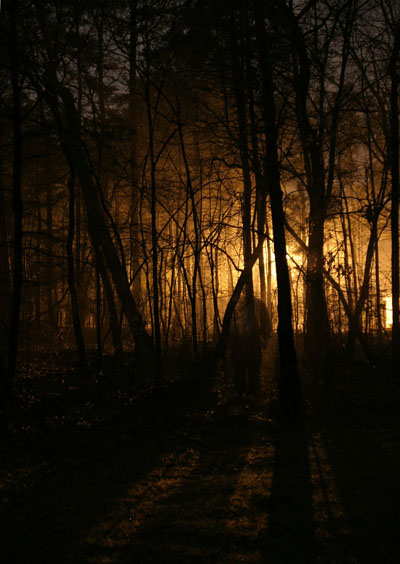 In the past couple of weeks, I’ve been doing little more than experimenting. One a foggy night recently, I went out to try and accomplish one of the images I’ve planned for just such conditions. As is often the case with these experiments, they didn’t come out quite as intended, meaning I’ll have to try again when we get a nice nighttime fog. But something else that I tried on a lark came out reasonably well, I think, though perhaps not as strongly at this size. I’ve been toying with posting it to some ghost forums just to see how much it can stir up – and how few can actually figure out that it’s a simple, and common, photographic effect. Technically, not a double-exposure, since it’s only one long exposure, but when your model (in this case me) isn’t in position for the entire exposure, a certain amount of light shows “through.”
In the past couple of weeks, I’ve been doing little more than experimenting. One a foggy night recently, I went out to try and accomplish one of the images I’ve planned for just such conditions. As is often the case with these experiments, they didn’t come out quite as intended, meaning I’ll have to try again when we get a nice nighttime fog. But something else that I tried on a lark came out reasonably well, I think, though perhaps not as strongly at this size. I’ve been toying with posting it to some ghost forums just to see how much it can stir up – and how few can actually figure out that it’s a simple, and common, photographic effect. Technically, not a double-exposure, since it’s only one long exposure, but when your model (in this case me) isn’t in position for the entire exposure, a certain amount of light shows “through.” As I was about to sit down to work on something tonight, it began pouring outside, and since we’ve had some nice warm weather recently, the frogs have come back out – someplace not far outside my window a treefrog started calling. I went outside with a pair of flashlights but still didn’t find it (little bugger got nervous as I got close and stopped calling,) but I did find a ladybug in not-so-typical conditions. I didn’t stay out long because it was raining too hard to do much photography, and both my jacket and the light camera bag are drying out now.
As I was about to sit down to work on something tonight, it began pouring outside, and since we’ve had some nice warm weather recently, the frogs have come back out – someplace not far outside my window a treefrog started calling. I went outside with a pair of flashlights but still didn’t find it (little bugger got nervous as I got close and stopped calling,) but I did find a ladybug in not-so-typical conditions. I didn’t stay out long because it was raining too hard to do much photography, and both my jacket and the light camera bag are drying out now.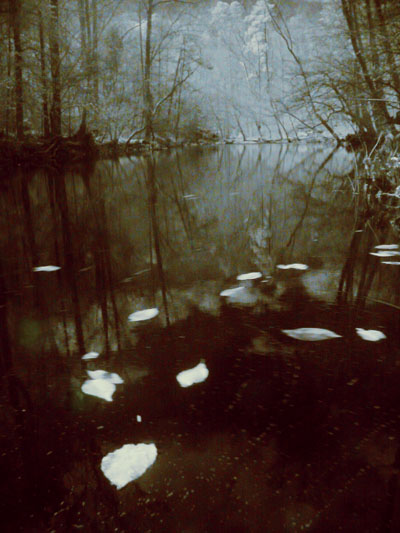 Oh, yeah, the contest! Anyway, this one has much more reasonable terms, so even though I have plenty in stock, I also started looking for potential shots that would fit their criteria better. Along the way, I was experimenting again, this time with infrared. I’ve talked about infrared on the site
Oh, yeah, the contest! Anyway, this one has much more reasonable terms, so even though I have plenty in stock, I also started looking for potential shots that would fit their criteria better. Along the way, I was experimenting again, this time with infrared. I’ve talked about infrared on the site 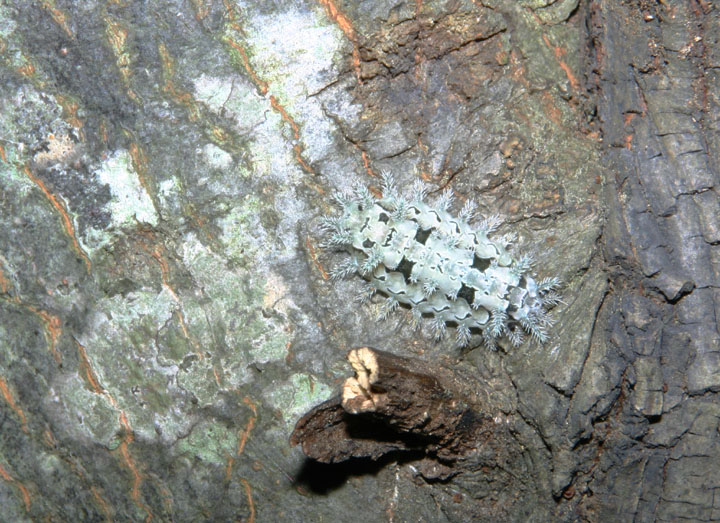
 Obviously, if the patterns of this little guy were randomly distributed, rather than so distinctive, it would have an even better form of camouflage. But to do this, the Hox genes would have to be very selectively inactive – enough to allow for color patterns to be asymmetrical, but not enough to produce six legs on one side and two on the other. That’s a very specific mutation. Moreover, for natural selection to favor it, it would have to generate some advantage (or, be common enough to carry while otherwise not being disadvantageous – neutral traits can continue too.) While we might think that asymmetry would help a lot towards not being recognized by predators, there isn’t much evidence that many predators are likely to recognize symmetry as a telltale. The color and the fuzzy shape may be enough. However, there are some other factors too. Many birds can see a much wider range of colors than we can, so even asymmetry might be a very minor factor against not matching the shade of lichens very closely. And this says nothing for how effective those little spines might be (I didn’t try to handle it,) or its scent or taste. So perhaps asymmetry simply didn’t have enough selective pressures to evolve.
Obviously, if the patterns of this little guy were randomly distributed, rather than so distinctive, it would have an even better form of camouflage. But to do this, the Hox genes would have to be very selectively inactive – enough to allow for color patterns to be asymmetrical, but not enough to produce six legs on one side and two on the other. That’s a very specific mutation. Moreover, for natural selection to favor it, it would have to generate some advantage (or, be common enough to carry while otherwise not being disadvantageous – neutral traits can continue too.) While we might think that asymmetry would help a lot towards not being recognized by predators, there isn’t much evidence that many predators are likely to recognize symmetry as a telltale. The color and the fuzzy shape may be enough. However, there are some other factors too. Many birds can see a much wider range of colors than we can, so even asymmetry might be a very minor factor against not matching the shade of lichens very closely. And this says nothing for how effective those little spines might be (I didn’t try to handle it,) or its scent or taste. So perhaps asymmetry simply didn’t have enough selective pressures to evolve. Some species do display some asymmetry though, albeit limited. Here, a northern copperhead (Agkistrodon contortrix mokeson) displays some mismatching patterns at the spine, and apparently the southern subspecies (A. c. contortrix) can display patterns that don’t even connect at the spine. Now, here’s something interesting, because it seems it’s not a common trait among the other variants in other parts of the US, just among A. c. contortrix in the southeast. I haven’t found that anyone has studied this to determine why this might be (grad students, feel free to use this suggestion, just remember me when the book royalties come in,) so I can only speculate. But the predatory species of birds would be different between a copperhead and an Euclea, and it’s possible that a species of raptor in the southeast might have better eyes for asymmetry than other raptors where the other subspecies of copperhead can be found. Or this might be way off the mark, and it’s actually influenced by diet or habitat. Myself, I favor blaming the longneedle pines.
Some species do display some asymmetry though, albeit limited. Here, a northern copperhead (Agkistrodon contortrix mokeson) displays some mismatching patterns at the spine, and apparently the southern subspecies (A. c. contortrix) can display patterns that don’t even connect at the spine. Now, here’s something interesting, because it seems it’s not a common trait among the other variants in other parts of the US, just among A. c. contortrix in the southeast. I haven’t found that anyone has studied this to determine why this might be (grad students, feel free to use this suggestion, just remember me when the book royalties come in,) so I can only speculate. But the predatory species of birds would be different between a copperhead and an Euclea, and it’s possible that a species of raptor in the southeast might have better eyes for asymmetry than other raptors where the other subspecies of copperhead can be found. Or this might be way off the mark, and it’s actually influenced by diet or habitat. Myself, I favor blaming the longneedle pines.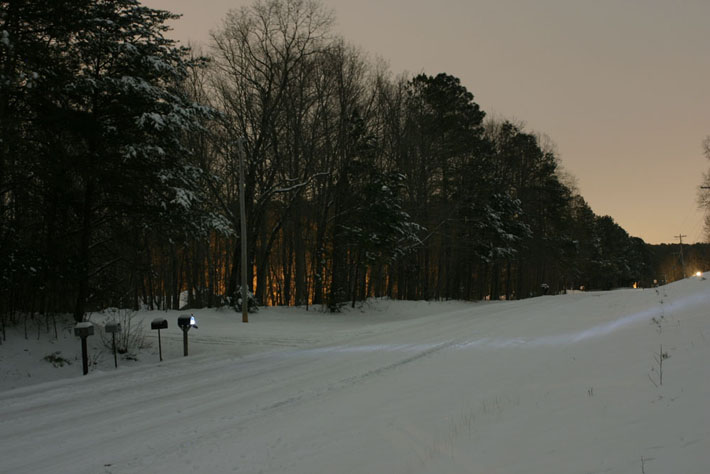
 Last night, as I was going to bed, I noticed the light pouring through the blinds was pretty bright, indicating that the sky had cleared and the nearly-full moon was out. Naturally, with a full snowfield, I couldn’t let this pass, but the roads were too treacherous, so I stuck around and did my photography locally. As I’ve said earlier, the full moon can provide a lot of light, if you let the exposure out long enough – this one is three minutes at ISO 100, f8, slightly brightened in post-processing. I like how the sparkles showed up.
Last night, as I was going to bed, I noticed the light pouring through the blinds was pretty bright, indicating that the sky had cleared and the nearly-full moon was out. Naturally, with a full snowfield, I couldn’t let this pass, but the roads were too treacherous, so I stuck around and did my photography locally. As I’ve said earlier, the full moon can provide a lot of light, if you let the exposure out long enough – this one is three minutes at ISO 100, f8, slightly brightened in post-processing. I like how the sparkles showed up. Earlier today, I got out and chased a few shots as well. An important thing to remember as you’re doing snow (or beach) shots is that the camera meter wants to make the scene an “average” brightness. When you have snow or bright sand and water, the camera will darken this down to middle tones if you let it, so always adjust to overexpose the shot. It’s called, “exposure compensation,” and for snow, generally 2/3 to 1 full stop is useful, depending on what you’re after. Bleaching out the snow to pure white destroys the details. So unless you’re just using it for a setting, I’d recommend keeping it bright but not white. This shot is 2/3 over-exposed from what the camera calculated, metered from the snow in the foreground. Unfortunately, at this size it doesn’t carry the details as well, so you can just make out that the rabbit trail continues on the other side of that broad shadow.
Earlier today, I got out and chased a few shots as well. An important thing to remember as you’re doing snow (or beach) shots is that the camera meter wants to make the scene an “average” brightness. When you have snow or bright sand and water, the camera will darken this down to middle tones if you let it, so always adjust to overexpose the shot. It’s called, “exposure compensation,” and for snow, generally 2/3 to 1 full stop is useful, depending on what you’re after. Bleaching out the snow to pure white destroys the details. So unless you’re just using it for a setting, I’d recommend keeping it bright but not white. This shot is 2/3 over-exposed from what the camera calculated, metered from the snow in the foreground. Unfortunately, at this size it doesn’t carry the details as well, so you can just make out that the rabbit trail continues on the other side of that broad shadow.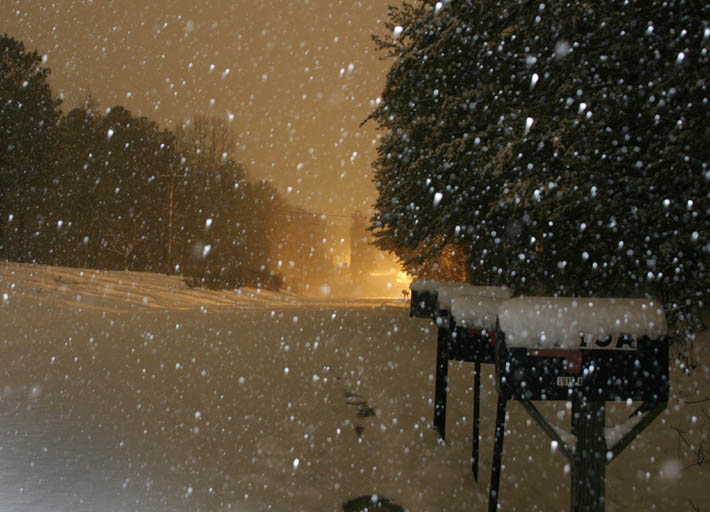
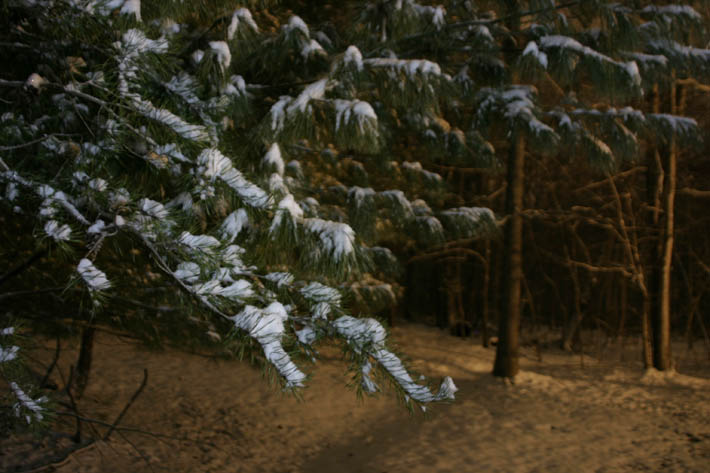
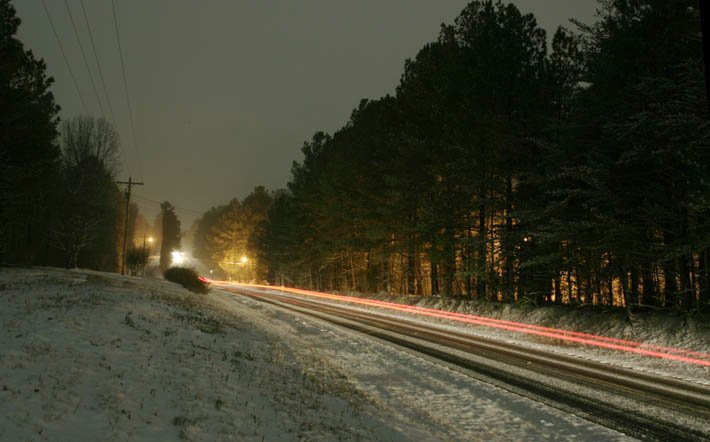
 And even though it was full dark without bright lights shining towards the lens, I fixed the lenshood in place too, for good reason. It kept the snow from hitting the lens and putting water spots in my shots. Some idea of the usefulness of this can be seen here, where the lower lip of the hood collected a tiny snowdrift while I was shooting. A quick shot in the mirror once I came inside was necessary, reversed for the blog just so it wasn’t too confusing.
And even though it was full dark without bright lights shining towards the lens, I fixed the lenshood in place too, for good reason. It kept the snow from hitting the lens and putting water spots in my shots. Some idea of the usefulness of this can be seen here, where the lower lip of the hood collected a tiny snowdrift while I was shooting. A quick shot in the mirror once I came inside was necessary, reversed for the blog just so it wasn’t too confusing.